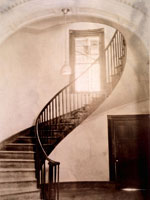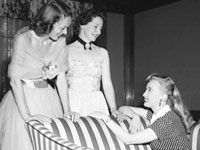Lafayette Square [MO]
Lafayette Square is St. Louis's oldest historic district and was declared a National Historic District in 1979. The neighborhood surrounds a 30-acre Victorian park that is the oldest park west of the Mississippi River. The park serves as the hub for 375 Victorian homes of French Second Empire, Romanesque, Italianate, Queen Anne, and Federal designs. The Lafayette Square Restoration Committee has worked to restore over 90 percent of these homes to their original states.
The Committee sponsors several activities and programs throughout the year, including house and garden tours as well as a free concert series. The website offers historical information regarding the neighborhood, an events calendar, library access, and several photo galleries of the neighborhood.
Neighborhood preservation organization, not oriented to education.


